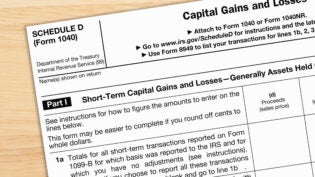
Your accounting will ultimately produce financial statements for your business. They are there to help you run the business, and effectively represent each decision you’ve made in the past to help you make decisions for the future. The financial statements accomplish this by translating everything into dollars and cents.
But there are other benefits to financial statements, too. They help you to file your tax returns, find additional funding, or even draw in buyers and investors for your company. Financial statements for your business will usually have three individual elements, and you should understand them all to see how they can help you.
Income Statement
The income statement, also known as the profit and loss or P&L statement, is the primary part of your business’s financial statements. This statement generally summarizes your business’s operations over a given timeframe, showing both revenue and expenses. First on the list will be all your sales, a monetary representation of customers accepting your products or services. The sales represent revenue.
Along with your sales, the income statement also lists all your costs that you require to operate your business and make these sales. The first costs are direct costs, which are directly related to your sales. These include advertising, supplies, and, often, wages of your employees. These costs tend to grow or shrink with your volume of sales. There are also indirect costs, or overhead, which are fixed costs that you must pay no matter what your sales are; they are the cost of doing business. Examples of indirect expenses are rent, interest payments, and utilities.
On your income statement, these expenses will be subtracted from your sales revenues, giving you your net income or loss. This figure tells you how efficiently you’ve used your resources, and also shows your likelihood of staying in business on your current performance trends. A good trend to look at when evaluating your income statements is to look at net income. You don’t want to just know where you’ve been, but also where you’re going. Comparing current income to past income allows you to make inferences about future performance.
Balance Sheet
The second element of your financial statements is the balance sheet. It gives a snapshot of your company’s assets and liabilities at the end of a designated period, such as the month, quarter, or year. As a whole, the balance sheet helps investors, bankers, and creditors determine the value of a business. It shows the resources your business has, as well as the obligations weighing it down.
First, the balance sheet lists your assets that you have on hand. These could be money in the bank, monies owed by others, inventory, and other things. Next is a list of your liabilities, or your obligations to others. It could mean debt to your bank or other creditors, sales and payroll taxes owed, or trade payable you have not paid for yet. The final section of the balance sheet is the equity section. This outlines your original investment and undistributed income from past accounting periods. All told, the balance sheet will show how your company’s assets are growing and helping advance the company.
Cash Flow Statement
The third part of your financial statements is the cash flow statement. This statement displays your source and application of funds, where you brought money in and how it was spent. If you pay down debt, withdraw funds, or increase inventory, that’s a use of funds. If you contribute money to the business or reduce inventory, that’s a source of funds, increasing your cash position. More than just saying what the change in dollars is for your business, the cash flow statement lets you see the how and why of the change. It’s a good combination of the income statement and the balance sheet, combining the change in your assets and liabilities with income operations as well as investment and financing. It’s particularly valuable to potential creditors and investors, who want to judge the business’s soundness and ability to generate money and repay debts.
4647 Views












